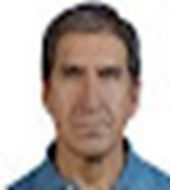Análisis social, económico y ambiental de la productividad ganadera: uso óptimo de recursos
Contenido principal del artículo
Resumen
La presente investigación tiene como finalidad diagnosticar los factores sociales, económicos y ambientales que influyen en la productividad ganadera, la metodología aplicada se basa en la recopilación y análisis de información bibliográfica contenida en libros, artículos académicos, informes nacionales e internacionales.
Además, esta investigación considera un diseño no experimental transversal, argumentado y estratégico, obteniendo información en preguntas dirigidas a tres haciendas, a través de un bosquejo metodológico descriptivo con variables cuantitativas y cualitativas.
Los resultados reflejaron que la producción ganadera tendría poco aprovechamiento efectivo en un 66,7%, con la mayor concentración de esta actividad ubicada en la región Sierra, por debajo del 80%. Se determinó que el sector ganadero ha tenido un considerable aporte representado en el Producto Interno Bruto (PIB) del último año (8,2%).
Se concluye que la productividad ganadera debe estar alineada a los objetivos de desarrollo sostenible, que considera alternativas factibles para convertir las pérdidas en ganancias, para generar rentabilidad, estabilidad e innovación aportando al crecimiento sostenido y oportuno a nivel local, nacional y así expandirse a redes internacionales.
Descargas
Detalles del artículo

Esta obra está bajo una licencia internacional Creative Commons Atribución-NoComercial-CompartirIgual 4.0.
1. Derechos de autor
Las obras que se publican en 593 Digital Publisher CEIT están sujetas a los siguientes términos:
1.1. 593 Digital Publisher CEIT, conserva los derechos patrimoniales (copyright) de las obras publicadas, favorece y permite la reutilización de las mismas bajo la licencia Licencia Creative Commons 4.0 de Reconocimiento-NoComercial-CompartirIgual 4.0, por lo cual se pueden copiar, usar, difundir, transmitir y exponer públicamente, siempre que:
1.1.a. Se cite la autoría y fuente original de su publicación (revista, editorial, URL).
1.1.b. No se usen para fines comerciales u onerosos.
1.1.c. Se mencione la existencia y especificaciones de esta licencia de uso.
Citas
Barrero, D. (2017). Estrategia Regional de Ganadería Sostenible. Organización de las Naciones Unidas para la Alimentación y la Agricultura. Costa Rica: CODEGALAC. Recuperado el 17 de 11 de 2021
Barsky, O., Barril, A., Cosse, G., Morandi, J., & Humberto, V. (03 de 1980). El proceso de transformaciòn de la producciòn lechera serrana y el aparto de generaciòn transferencia en Ecuador. Protaal(40), pág. 31. Recuperado el 12 de 11 de 2021
Barzola, S. (2013). ESTUDIO DE CADENAS PECUARIAS DE ECUADOR. Quito: Ministerio de Agricultura, Ganaderìa y Pesca.
CEPAL, & FAO. (1986). Crecimiento Productivo y Heterogeniedad Agraria. Santiago de Chile: Biblioteca CEPAL. Recuperado el 12 de 11 de 2021
Chaves, R., Salazar, D., Orejuela, D., Culchàn, M., Suàrez, M., & Villafuerte, W. (2012). Encuesta de Superficie y Producción Agropecuaria Continua ESPAC. Quito: INEC.
Moncada, A., & Àvila, E. (2019). Integrando la Reversión de Degradación de Tierras y Reducción del Riesgo de Desertificación en Provincias Vulnerables. Quito: Medio Ambiente Mundial. Recuperado el 12 de 11 de 2021
Ollague, J., Capa, L., Novillo, E., Sanchéz, T., Sanchéz, L., & García, M. (2019). Variables sociales, económicas y productivas como referente de posicionamiento nacional de la provincia de El Oro, Ecuador. Espacios, 17. Recuperado el 18 de 01 de 2022
Prado Carpio, E., Martínez Soto, M., Monroy Rodrìguez, C., & Unda Barrezueta, S. (Diciembre de 2020). GESTIÓN DE AGRONEGOCIOS Y EL DESEMPEÑO DE LA CADENA DE VALOR DE LA CONCHA PRIETA “ANADARA TUBERCULOSA”. ResearchGate, 302. Recuperado el 24 de 11 de 2021
Riojas, I., Badii, M., Guillen, A., García, M., & Abreu, J. (11 de 2018). La ganadería y el desarrollo sustentable. International Journal of Good Conscience, 77-102. Recuperado el 17 de 11 de 2021
Sànchez, A., Vayas, T., Mayorga, F., & Freire, C. (2019). Sector Ganadero. Ambato: INEC, ESPAC. Recuperado el 12 de 11 de 2021
Tannahill, R. (1973). Ganaderia y Cria de Animales. En M. L. Myers, Ganaderia: Ambito y sobre la Salud (págs. 42-70). Nueva York: Enciclopedia de Salud y Seguridad en el trabajo. Recuperado el 12 de 11 de 2021
Valverde, T. (9 de 01 de 2013). Ánalisis estadístico de la influencia de la fiebre aftosa en el desarrollo del sector ganadero. Quito, Quito, Ecuador. Recuperado el 18 de 01 de 2022
Villegas, Z. V. (2019). Conducta de la hembra Bovina Lechera durante el ordeño en una finca productiva en la Provincia de El Oro. Machala, El Oro, Ecuador. Recuperado el 18 de 01 de 2022
Vite, H., & Vargas, O. (2018). Ganadería de precisión en la provincia de El Oro: Diagnostico situacional. Espirales, 13. Recuperado el 18 de 01 de 2022
Vizcarra, R., Lasso, R., & Tapia, D. (2015). La Leche del Ecuador. Quito: Effecto Studio. Recuperado el 18 de 01 de 2022





